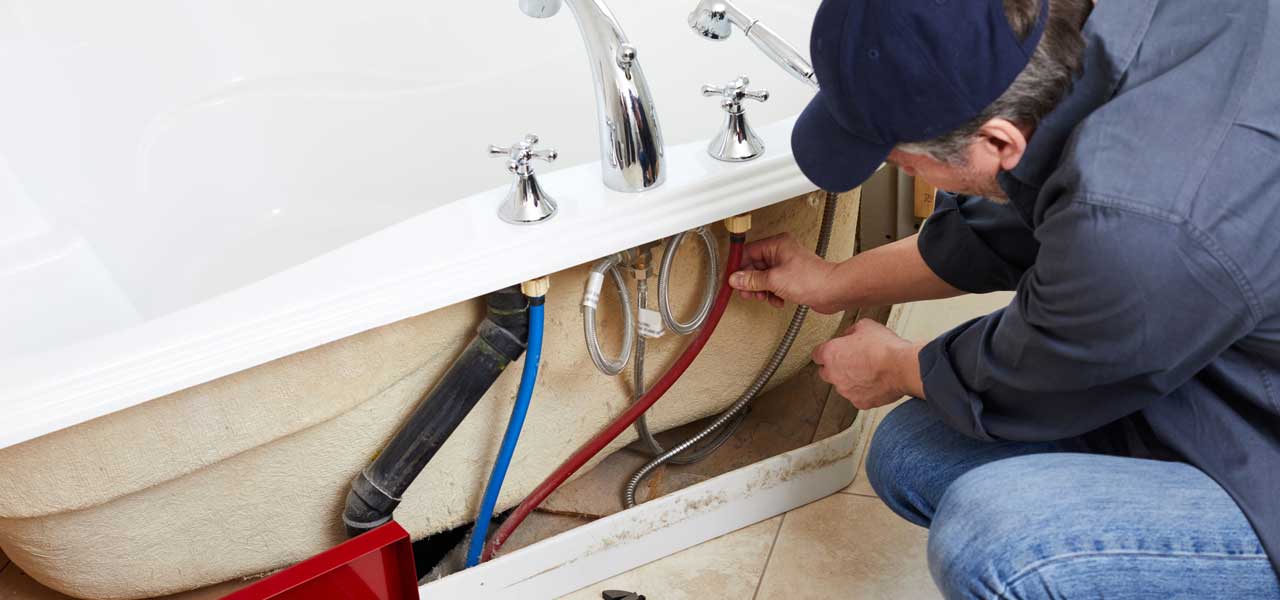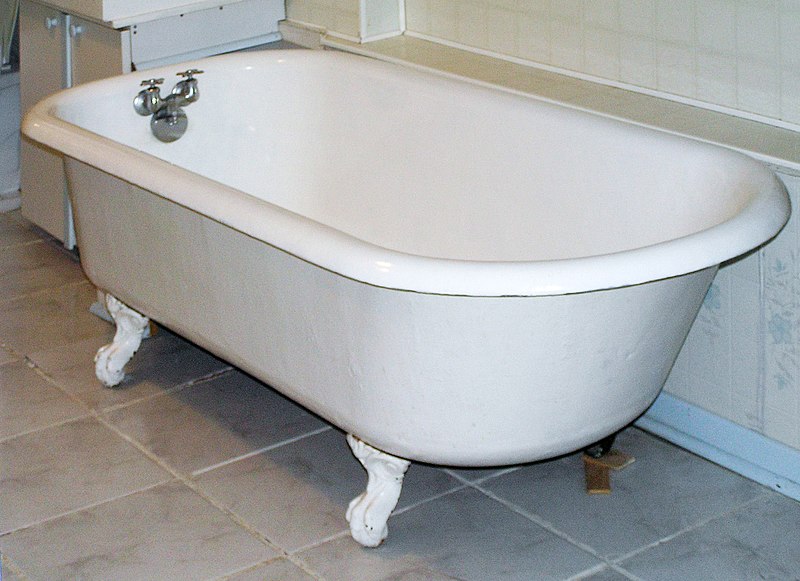How to Replace a Bathtub Yourself: Removing and also Replacing.
How to Replace a Bathtub Yourself: Removing and also Replacing.
Blog Article
Each person will have their own unique rationale involving Tools You Need to Install a New Bathtub .

Installing a tub isn't exactly brain surgery, but it does call for solid plumbing, woodworking, and also often, tiling abilities. Replacing an old bath tub with a new one is additionally a moderately hard project. If the old bathtub is readily easily accessible, the project can relocate quickly; if you need to open up a wall to get rid of the old tub and place the brand-new tub, the job is much harder. In either situation, the task is within a home handyman's abilities, although you will need an assistant to move out the old bathtub and also set in the brand-new one. Make sure you have actually certified yourself for the work and are comfortable trying it. Rather than employing a professional to take control of a halfway-completed task, it is much better to consider employing one before you start. Chances are you may require a specialist plumber to make tube connections.
This short article will certainly help you install a brand-new bath tub in your bathroom if you have currently acquired a new tub as well as do not require to change the plan of your previous water pipelines.
Your tools and material checklist ought to make up the following:
Planning for the Installation
To start with, the sustaining structure provided with the bathroom needs to be fitted (if required) according to the maker's guidelines. Next off, fit the faucets or mixer to the tub. When suitable the faucet block, it is very important to make certain that if the faucet includes a plastic washing machine, it is fitted between the bath and the taps. On a plastic bath, it is also reasonable to fit a sustaining plate under the faucets system to avoid stress on the tub.
Fit the flexible tap connectors to the bottom of the two taps using 2 nuts and olives (sometimes provided with the bathtub). Fit the plug-hole electrical outlet by smearing mastic filler round the sink outlet opening, and afterwards pass the electrical outlet with the hole in the bath. Use the nut provided by the maker to fit the plug-hole. Take a look at the plug-hole outlet for an inlet on the side for the overflow pipe.
Next off, fit completion of the versatile overflow pipe to the overflow outlet. Afterwards, screw the pipeline to the overflow face which ought to be fitted inside the bath. See to it you make use of every one of the supplied washing machines.
Attach the trap to the bottom of the waste outlet on the bath tub by winding the string of the waste outlet with silicone mastic or PTFE tape, and screw on the catch to the outlet. Connect all-time low of the overflow tube in a similar manner.The bath need to now prepare to be suited its last setting.
Removing Old Taps
If you need to change old taps with new ones as a part of your installation, after that the first thing you ought to do is disconnect the water system. After doing so, switch on the faucets to drain pipes any water continuing to be in the system. The process of eliminating the existing taps can be quite bothersome due to the restricted accessibility that is typically the case.
Utilize a basin wrench (crowsfoot spanner) or a faucet device to undo the nut that connects the supply pipelines to the faucets. Have a cloth all set for the remaining water that will certainly come from the pipelines. Once the supply pipelines have been gotten rid of, utilize the very same tool to loosen up the nut that holds the taps onto the bath/basin. You will certainly need to quit the single faucets from turning throughout this process. When the taps have actually been eliminated, the holes in the bath/basin will certainly need to be cleaned of any kind of old sealing substance.
Before carrying on to fit the brand-new taps, contrast the pipe links on the old faucets to the new faucets. If the old taps are longer than the brand-new faucets, then a shank adapter is needed for the new taps to fit.
Setting up the Bath tub
Using both wood boards under its feet, place the tub in the called for placement. The wooden boards are practical in evenly spreading out the weight of the bathtub over the area of the boards as opposed to focusing all the weight onto 4 tiny points.
The next objective is to ensure that the tub is leveled all round. This can be attained by checking the spirit level as well as adjusting the feet on the bath tub until the spirit level checks out degree.
To install taps, fit all-time low of the furthest versatile faucet connector to the suitable supply pipe by making a compression sign up with; after that do the same for the other tap.
Turn on the water and inspect all joints as well as brand-new pipework for leakages and tighten them if required. Fill up the bathtub and likewise inspect the overflow electrical outlet and also the normal outlet for leaks.
Ultimately, fix the bath paneling as explained in the maker's user's manual. Tiling and also securing around the bathtub should wait until the tub has been utilized a minimum of when as this will certainly settle it into its final setting.
Fitting New Touches
If the tails of the brand-new faucets are plastic, after that you will certainly require a plastic adapter to prevent damage to the thread. One end of the port fits on the plastic tail of the tap as well as the other end offers a connection to the existing supply pipes.
If you need to fit a monobloc, then you will require decreasing couplers, which connects the 10mm pipe of the monobloc to the standard 15mm supply pipe.
Next off, place the tap in the installing opening in the bath/basin making sure that the washing machines remain in area in between the faucet as well as the sink. Protect the faucet in position with the supplier given backnut. As soon as the faucet is firmly in position, the supply pipelines can be attached to the tails of the faucets. The faucets can either be attached by utilizing corrugated copper piping or with regular tap adapters. The previous kind needs to be attached to the faucet finishes first, tightening only by hand. The supply pipelines can later on be linked to the other end. Tighten both ends with a spanner after both ends have been connected.
Tiling Around the Bathtub
In the area where the bathroom fulfills the floor tile, it is essential to secure the accompanies a silicone rubber caulking. This is essential as the fitting can move sufficient to fracture an inflexible seal, triggering the water to permeate the wall in between the bath and the tiling, causing problems with dampness and also possible leaks to the ceiling listed below.
You can select from a variety of coloured sealers to assimilate your components and also installations. They are marketed in tubes as well as cartridges, as well as are capable of securing voids approximately a size of 3mm (1/8 inch). If you have a larger space to fill, you can fill it with spins of drenched paper or soft rope. Keep in mind to always load the bath tub with water prior to sealing, to enable the movement experienced when the tub remains in usage. The sealer can break fairly early if you do not take into account this activity prior to securing.
Conversely, ceramic coving or quadrant floor tiles can be utilized to edge the bath or shower tray. Plastic strips of coving, which are easy to use and also cut to size, are also conveniently offered on the market. It is suggested to fit the ceramic tiles using water-resistant or water-proof sticky and cement.
Bathtub Installation
How Important Is A Bathtub To Your Home?
High-quality baths, showers, and other bathroom updates are necessary when considering a smart investment in your home. It’s a room that you go to every day and one that is constantly being used by guests.The bathroom is one of the top trafficked rooms in a home and also one of the most valuable in terms of home resale.
Install Piping Before Tub
You will be using your existing drain and waste vent system, but pipes required include the hot and cold water supply lines and a pipe leading to a shower head. A mixing valve and shower head are also needed. Air chambers may be required.
Position the Tub
Lower the tub into place so that the continuous flange fits against the wall studs and rests on 1’x4' or 2’x4' supports. Anchor the tub to the enclosure with nails or screws inserted through the flanges into the studs.
NOTE: Remember, bathtubs and shower stalls may require support framing. A bathtub filled with water is extremely heavy, so check building codes and framing support before installing the tub.
Assemble Drain Connections
Assemble the bathtub drain connections by connecting the tub overflow with the tub drain above the trap, not beyond it. The trap will have a compression fitting that screws over the arm of the overflow assembly.
Place a Pipe For the Shower Head
First, locate a brass female threaded winged fitting and attach it to a framing support via a screw or a nail. Then run a pipe up the wall for the shower head. Sweat or solder the other side of the brass fitting to the top of the pipe.
Attaching Hot and Cold Water Lines
Attach your water lines for both hot and cold by sweating these directly into the hot and cold ports of the mixing valve. The mixing valve will be how water enters the tub’s system, not by the pipes themselves.
Install the Spout
Extend a piece of 1/2 inch pipe, or whichever length is specified in the manufacturer’s instructions, for the tub spout. Sweat on a male threaded fitting at the end of the pipe or use a brass nipple of the proper length and a 1/2 inch cap.
NOTE: At this point you should have your rough-in plumbing work inspected before proceeding further.
Check For Leaks
Restore the water pressure and check the drain connection and the supply pipes for any sign of leaking.
estore the Bathroom Wall
Replace the wall with moisture-resistant drywall as a base for your wall covering. Seal the joints between the wall and your new tub with silicone caulk as protection against water seepage.
https://www.berkeys.com/2016/12/02/bathtub-installation-dallas/

Do you really like more info about How to Install a Bathtub: Install an Acrylic Tub and Tub Surround? Try to leave a comment further down. We'd be glad to find out your views about this blog posting. We hope that you come back again in the near future. Sharing is caring. Helping others is fun. Thank-you for taking the time to read it.
Source Report this page